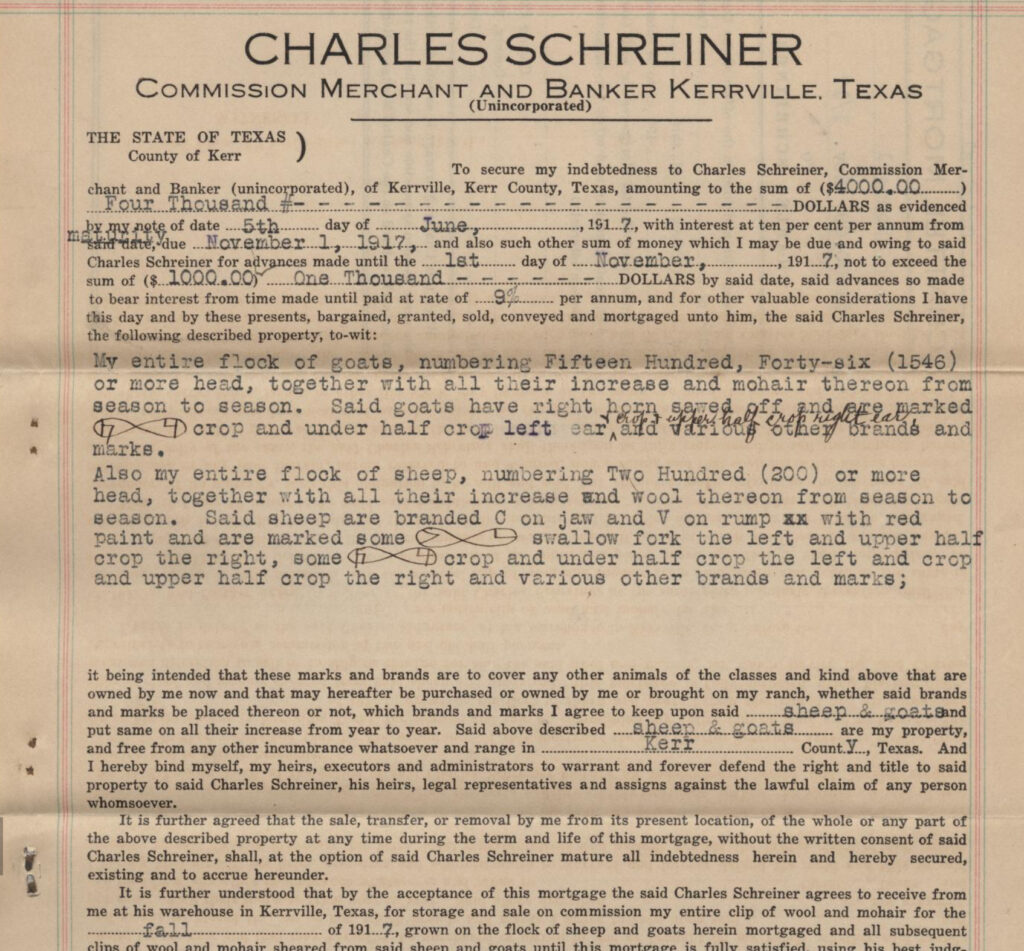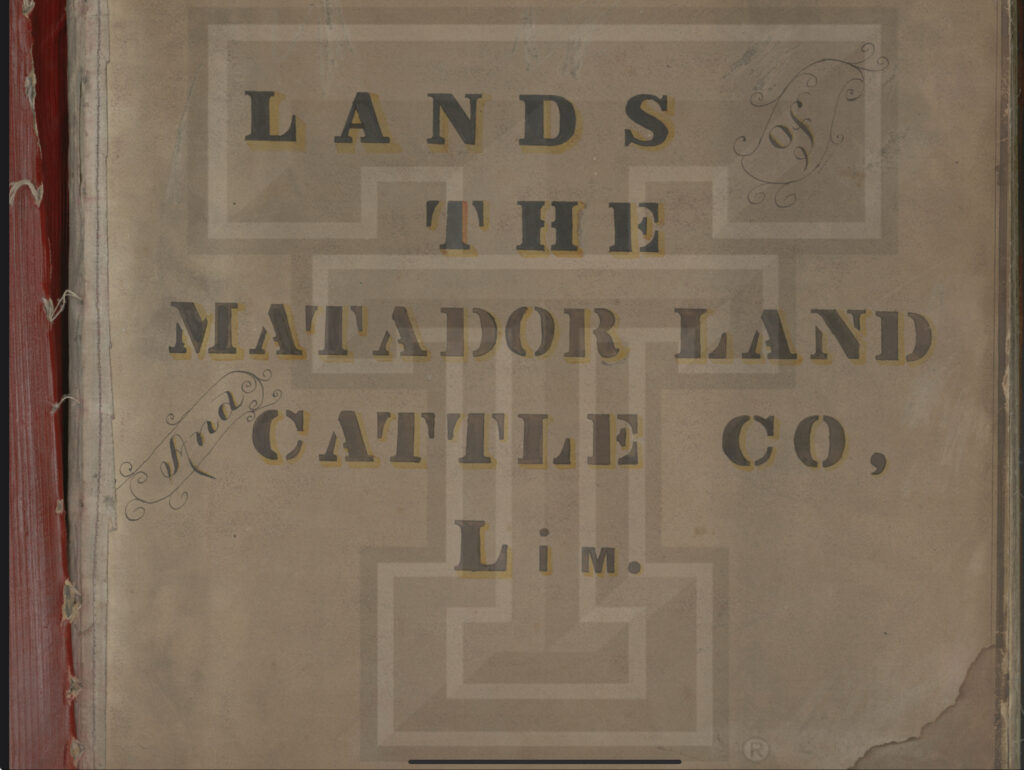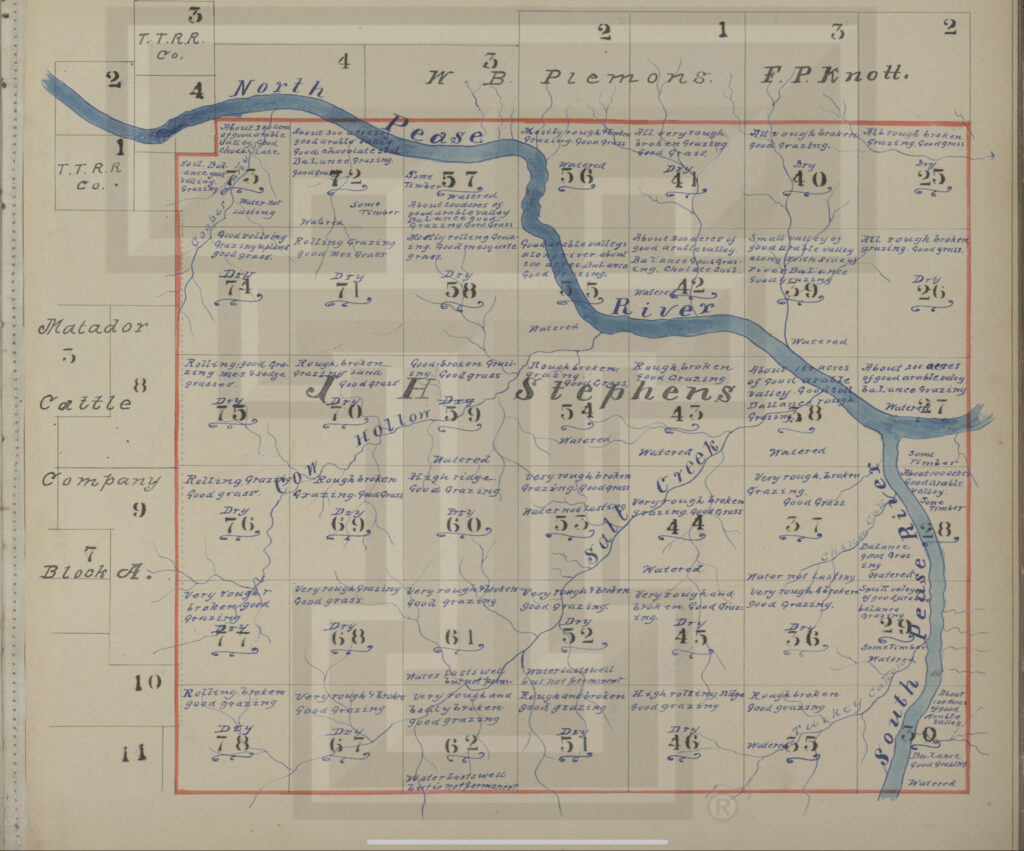If you rode into the Texas Panhandle in 1898, you were stepping into a different financial universe.
No perpetual “operating lines.”
No rolling paper stacked on top of last year’s mistakes.
No banker in a tower deciding what your land was “worth” this quarter.
Every deal started and ended with the cow.
You borrowed against animals that carried your brand.
You paid when they hit the railhead.
And if you didn’t, the sheriff took the herd by the end of the week.
That wasn’t a metaphor. It was the system.
For twenty-three years, from roughly 1890 to the signing of the Federal Reserve Act in 1913, Texas ranching ran on a hard, finite, reputation-driven model of debt that almost never broke the cowboy who played it straight.
Cattle-loan defaults stayed under two percent across the state — not because ranchers were perfect, but because failure meant public loss of your brand, your cattle, and your standing as a man.

The Cow As Collateral
Texas law made one thing crystal clear: cattle weren’t background scenery. They were personal property and primary collateral.

Chattel mortgages on cattle had to be filed in the same county where the brand was registered — within thirty days or the lien was void against third parties. The county books and the Texas & Southwestern Cattle Raisers Association brand books together formed a public “time chain” of ownership and obligation.
Beside your brand mark, anyone could see the note: who you owed, how much, and on what herd.

Open the historical brand books and county ledgers from that era and one pattern jumps out over and over again: the overwhelming majority of recorded liens are on cattle only, not land.
In many Panhandle counties those numbers run in the high eighties and low nineties as a percentage of all ranch debt.
No cross-collateralization.
No twelve-page loan documents tying your herd, your land, your equipment, and your future into one ball of string.
If you borrowed, you put your cattle on the line.
If you defaulted, you lost your cattle.
The land stayed in your name unless you screwed up at a much larger scale.
It was brutal.
It was simple.
It was honest.

Banks That Couldn’t Print Forever
When national banks did get involved, they were chained down by law.
The National Banking Act capped how much any single borrower could take relative to the bank’s capital. Notes on cattle typically ran sixty days to six months. They could be renewed, but only if you brought new collateral to the table and filed it like everyone else.
There were no “infinite” operating lines.
In Fort Worth, Amarillo, and other cattle hubs, you see the same pattern in bank archives: short-term cattle paper, tied to brand inspection certificates and sale events. The money moved when the cattle moved. Not months later. Not “when markets improve.”

Most of the time, the banks weren’t even the center of gravity.
Ranchers and merchants financed each other directly. Goodnight and Adair, the Searight outfits, and others extended gold-backed notes that were settled at delivery. You trailed the herd, delivered the beef, squared the ledger, and started the next season clean.
Each year was its own chapter, not another page in one endless, rolling note.
Debt was a tool, not a habitat.
Land, Foreign Paper, and the Edges of the Map
Land financing in Texas during this era ran on a completely different track.
State school lands were typically sold on long-term vendor liens — often forty years — at modest fixed rates of three to five percent. Payments went directly to the state or the original seller. In most cases, commercial banks never touched those notes.
At the bigger end of the spectrum, especially in the Panhandle, something else was happening.

The Matador Land and Cattle Company, chunks of the old XIT empire, and a dozen other large outfits weren’t financed by local Texas banks at all. Their debt sat in Scottish and British hands: Dundee mortgage houses, debenture syndicates, private London capital.
Those foreign investors didn’t want to live under Texas usury caps or small-town constraints. They wanted yield. So they wrote their own rules from afar and recorded just enough locally to protect their claim.
From a distance, Texas still looked sovereign.
Up close, you could see the strings.
But even with that foreign paper in the mix, the core architecture stayed finite for the working rancher on the ground:
Borrow against cows.
Pay with cows.
Reset.

The Math of Less Than Two Percent
When you pull the banking reports from this period, one number repeats like a drumbeat: cattle loan defaults in Texas stayed under two percent across the state.
Not because ranchers were perfect or rain fell on schedule, but because the enforcement mechanism was immediate and public.
You missed your note, the sheriff and brand inspector showed up.
They seized cattle with your mark.
They sold them.
The ledger closed.
Everyone saw it.
Everyone talked about it.
Your name traveled across rail depots, sale barns, and coffee counters as either a man who stood by his brand or a man who wrote checks he couldn’t cover.

In that world, you didn’t casually roll debt forward.
You didn’t “manage” optics.
You solved the problem or you lost the herd.
The system punished bad behavior quickly.
So people behaved better.
The Day the Machine Switched On
Then December 23, 1913 hits the ledger like a quiet bomb.
The Federal Reserve Act unlocks elastic money and new games with reserves. Over time, interest caps soften, rollovers become normal, and the line between “this year’s note” and “last year’s note” starts to blur.

Debt stops being a season.
It becomes a lifestyle.
Collateral values drift.
Paper layers on paper.
Ranch families who used to clear the slate every year now find themselves living inside long-term operating loans that never really end.
The cow is no longer the solitary anchor. Land valuations, market cycles, bond desks, and distant capital flows all begin to intrude on what used to be a simple equation:
Cow. Brand. Note. Railhead. Done.
The finite era doesn’t explode.
It just quietly dissolves.
Historical Echo
If you strip away the dust and romance, the old Texas system was more than law and ledger. It was a worldview:
Value lives in the animal, not in the speculation wrapped around it.
Reputation is collateral.
Debt is a tool with a start and an end.
That worldview died, officially, the moment the new machine was signed into law.
And yet more than a century later, far south of the Panhandle, another country is starting to reach back toward that forgotten model—a model where loans are finite, reserves are real, and the cow once again becomes the anchor of a nation’s balance sheet instead of a pawn on someone else’s.
The frontier doesn’t disappear.
It changes address.



0 Comments